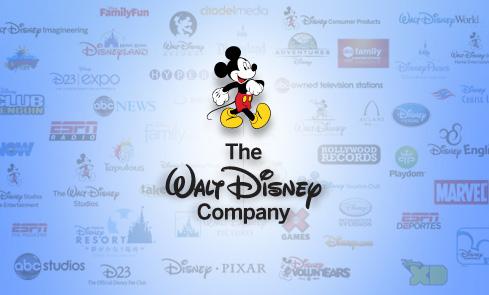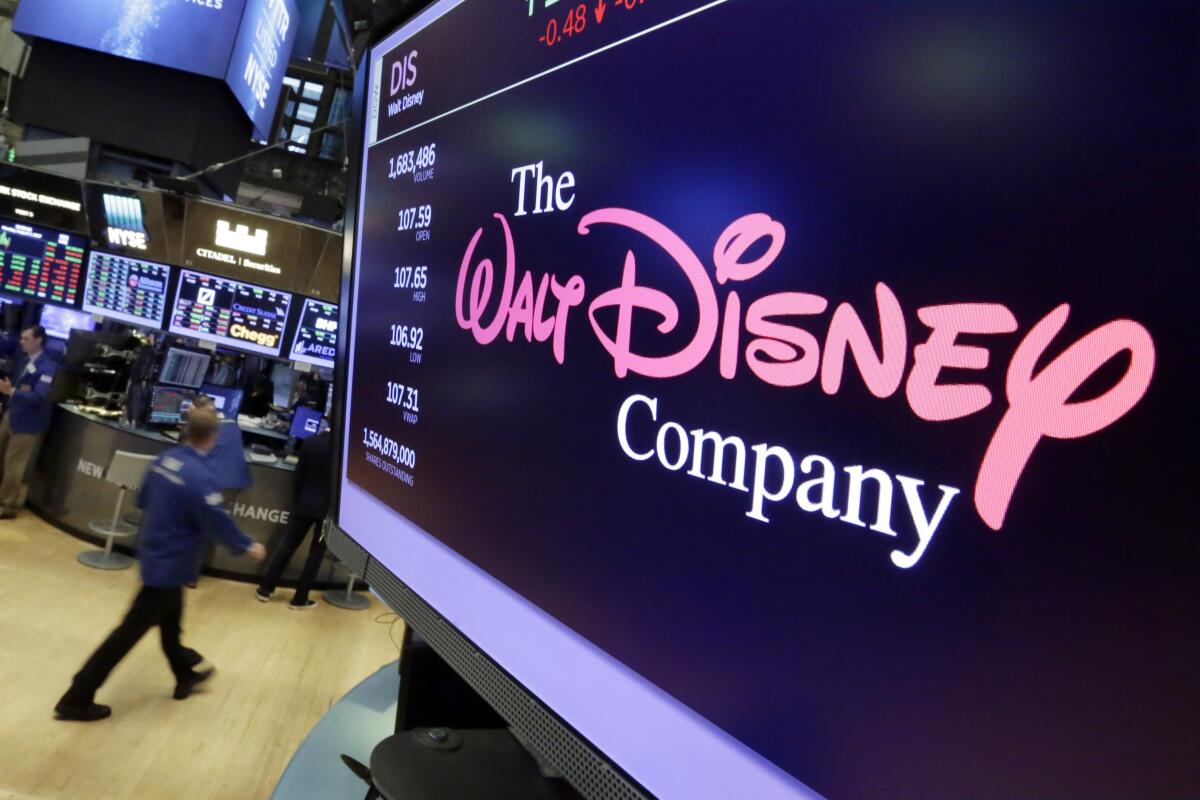Disney's Strategic Decisions and Market Impact: An Analysis

Disney's Strategic Decisions: A Critical Analysis
InvestorPlace's comparison of Walt Disney (NYSE:DIS) to Blockbuster's failure to adapt highlights a critical concern for investors and market watchers. The entertainment giant's strategic decisions, particularly its heavy investment in streaming services and the acquisition of 21st Century Fox for a staggering $71.3 billion, are under scrutiny. This critique is rooted in the observation that Disney's pivot to streaming, despite its current lack of profitability, and the declining performance of its traditional cable and movie businesses, might not have been the most judicious use of its resources. The suggestion that Disney could have instead expanded its highly lucrative parks business internationally or entered the online sports betting market earlier through its ESPN brand, offers an alternative path that might have diversified its revenue streams more effectively.
The financial performance of Disney, as reflected in its recent stock price movement, provides a nuanced picture. The company's stock price saw a modest increase of 1.04, or 0.92%, to close at $113.66. This movement occurred within a trading day that saw the stock fluctuate between $112.80 and $114.11. Over the past year, Disney's stock has experienced a wide range, hitting a low of $78.73 and a high of $123.74. With a market capitalization of approximately $208.49 billion and a trading volume of 7.41 million shares, Disney remains a heavyweight in the entertainment industry. These figures suggest that despite the strategic concerns raised, the market still holds a considerable amount of confidence in Disney's overall value and potential for recovery.
The critique from InvestorPlace about Disney's strategic direction is particularly poignant when considering the broader context of the entertainment industry's evolution. The shift towards streaming services has been rapid and unforgiving to those who fail to adapt effectively. Disney's decision to double down on streaming, through both its investment in technology and content via the acquisition of 21st Century Fox, was a bold move. However, the critique suggests that this strategy may not be paying off as hoped, especially when compared to the potential of expanding its already successful parks business or leveraging its ESPN brand to enter the online sports betting market sooner.
The financial data, including the recent uptick in Disney's stock price and its substantial market capitalization, indicates that while there are strategic concerns, the company is far from a position of weakness. The stock's performance over the past year, with a significant range between its low and high points, reflects the volatility and uncertainty in the market. However, it also shows resilience and potential for growth. Disney's ability to navigate the changing landscape of entertainment consumption and competitive pressures will be crucial in determining whether its current strategic bets will pay off in the long run.
In summary, while InvestorPlace's critique of Disney's strategic decisions sheds light on potential missteps, the company's financial health, as evidenced by its stock performance and market capitalization, suggests a more complex picture. Disney's journey through the evolving entertainment landscape is a testament to the challenges and opportunities that come with trying to adapt to new consumer habits and technological advancements. The coming years will be telling in whether Disney's strategic focus on streaming and content acquisition will solidify its position as a leader in the entertainment industry or if alternative strategies might have offered a more effective path to sustained growth and profitability.
| Symbol | Price | %chg |
|---|---|---|
| FILM.JK | 5775 | 1.73 |
| MSIN.JK | 505 | 0.99 |
| 352820.KS | 341000 | -0.44 |
| CNMA.JK | 119 | 0.84 |

Disney Raises EPS Outlook As ESPN Announces WWE-Focused Streaming Platform
Walt Disney (NYSE:DIS) raised its full-year adjusted earnings per share guidance after announcing a new streaming service from its ESPN division set to launch on August 21.
The direct-to-consumer platform, priced at $29.99 per month, will serve as the exclusive home for WWE events. It will also feature major professional and collegiate sports coverage—including the NFL, MLB, and NBA—alongside popular programs like "SportsCenter" and "Pardon the Interruption."
The move aligns with Disney’s broader strategy to expand its presence in the competitive streaming landscape as consumer preferences shift away from traditional cable.
CEO Bob Iger described the ESPN platform, recent NFL-related initiatives, and the planned integration of Hulu into Disney+ as "major steps" in the company’s streaming evolution.
During the fiscal third quarter, Disney+ subscriber numbers increased 1.4% quarter-over-quarter to 127.8 million, slightly below Bloomberg estimates of 127.97 million. The company expects subscriber growth to continue at a modest pace in the current quarter.
Iger also highlighted continued expansion plans across the company’s global theme parks and cruise operations.

Guggenheim Boosts Disney Target, Highlights Cost Efficiencies and DTC Strategy
Guggenheim raised its price target on Walt Disney (NYSE:DIS) to $140 from $120 while maintaining a Buy rating, pointing to stronger operating leverage, improving advertising trends, and a clearer path to unified direct-to-consumer (DTC) growth.
The analysts cited refined expectations for Disney’s Linear Networks, which are benefiting from cost efficiencies and the Star India divestiture, helping reduce expenses. Although recent films like Elio and Thunderbolts have underperformed modestly at the box office, Sports advertising revenue came in stronger than forecast thanks to robust aggregate viewership during the seven-game NBA Finals series.
Disney’s Experiences segment is also seeing resilient attendance and travel trends, supporting earnings stability. Additionally, the analysts emphasized that Disney’s upcoming full control of Hulu—secured with a $439 million payment to Comcast due by July 24—will enable the company to implement a unified DTC strategy. This includes bundling opportunities with Disney+, Hulu, and the forthcoming ESPN streaming service to drive incremental revenue.
Guggenheim now expects third-quarter total segment operating income (OI) of $4.5 billion, up from $4.4 billion previously, and has lifted its full-year segment OI forecast to $17.7 billion—just ahead of the $17.65 billion consensus. The updated outlook reflects Disney’s improving cost profile and growing momentum in streaming, supporting continued upside potential.

Guggenheim Boosts Disney Price Target to $140, Sees Stronger Profit and DTC Momentum
Guggenheim raised its price target on Walt Disney (NYSE:DIS) to $140 from $120 while maintaining a Buy rating, citing improved operating forecasts, resilient theme park trends, and a clearer path to direct-to-consumer (DTC) growth.
The firm updated its model to reflect several positives, including lower operating expenses at Linear Networks thanks to the Star India divestiture and ongoing cost efficiencies. While recent films like Elio and Thunderbolts underperformed modestly at the box office, Sports advertising revenue is tracking better than expected, buoyed by overall audience growth during the NBA Finals.
Meanwhile, Disney’s Experiences division continues to show resilient attendance and travel demand, supporting earnings stability.
Guggenheim highlighted Disney’s upcoming full ownership of Hulu—secured with a $439 million payment to Comcast due by July 24—as a catalyst for advancing its unified DTC strategy. This includes integrating Hulu with Disney+ and the upcoming ESPN streaming service, creating new bundling opportunities to boost revenue.
The analysts now forecast fiscal Q3 segment operating income of $4.5 billion, up from $4.4 billion previously, lifting full-year segment operating income to $17.7 billion—slightly ahead of the $17.65 billion Street consensus. The updated outlook reinforces Disney’s potential for sustainable profit growth and stronger competitive positioning in streaming.

The Walt Disney Company (NYSE:DIS) Stock Price Target and Financial Performance Overview
- Michael Morris from Guggenheim sets a price target of $120 for Disney stock, indicating a potential upside of about 14.13%.
- Bank of America analyst Jessica Reif Ehrlich has a more optimistic view with a price target of $140, based on Disney's robust financial performance.
- Despite economic challenges, Disney's theme parks and streaming services show strong performance, with future bookings data remaining strong.
The Walt Disney Company (NYSE:DIS) is a global entertainment giant known for its theme parks, movies, and streaming services. On May 8, 2025, Michael Morris from Guggenheim set a price target of $120 for Disney stock, which was trading at around $105.15. This suggests a potential upside of about 14.13% from its current price.
Disney has shown resilience in a challenging economic climate, with strong performance in its parks and streaming services. Following its first-quarter results, Disney raised its guidance, indicating confidence in its future. Bank of America analyst Jessica Reif Ehrlich reiterated a Buy rating, setting a price target of $140, as highlighted by the company's robust financial performance.
Despite lowering the price target from $130 to $120, Guggenheim's Michael Morris maintained a Buy rating. Needham analyst Laura Martin also upheld a Buy rating with a $125 price target. Disney's recent quarter exceeded expectations in revenue, operating income, earnings per share, and free cash flow, as noted by Ehrlich.
Disney's decision to raise its full-year earnings per share is encouraging, especially amid recent macroeconomic volatility. Although the company did not increase its fiscal year 2025 guidance for its Experiences segment, future bookings data remains strong. Walt Disney World bookings are up 4% in the third quarter and 7% in the fourth quarter.
Currently, Disney's stock is priced at $105.16, reflecting a 3% increase or $3.07. The stock has fluctuated between a low of $103.86 and a high of $106.19 today. Over the past year, Disney's stock has reached a high of $118.63 and a low of $80.10. The company's market capitalization is approximately $190.1 billion, with a trading volume of 16,792,922 shares on the NYSE.

The Walt Disney Company (NYSE:DIS) Stock Price Target and Financial Performance Overview
- Michael Morris from Guggenheim sets a price target of $120 for Disney stock, indicating a potential upside of about 14.13%.
- Bank of America analyst Jessica Reif Ehrlich has a more optimistic view with a price target of $140, based on Disney's robust financial performance.
- Despite economic challenges, Disney's theme parks and streaming services show strong performance, with future bookings data remaining strong.
The Walt Disney Company (NYSE:DIS) is a global entertainment giant known for its theme parks, movies, and streaming services. On May 8, 2025, Michael Morris from Guggenheim set a price target of $120 for Disney stock, which was trading at around $105.15. This suggests a potential upside of about 14.13% from its current price.
Disney has shown resilience in a challenging economic climate, with strong performance in its parks and streaming services. Following its first-quarter results, Disney raised its guidance, indicating confidence in its future. Bank of America analyst Jessica Reif Ehrlich reiterated a Buy rating, setting a price target of $140, as highlighted by the company's robust financial performance.
Despite lowering the price target from $130 to $120, Guggenheim's Michael Morris maintained a Buy rating. Needham analyst Laura Martin also upheld a Buy rating with a $125 price target. Disney's recent quarter exceeded expectations in revenue, operating income, earnings per share, and free cash flow, as noted by Ehrlich.
Disney's decision to raise its full-year earnings per share is encouraging, especially amid recent macroeconomic volatility. Although the company did not increase its fiscal year 2025 guidance for its Experiences segment, future bookings data remains strong. Walt Disney World bookings are up 4% in the third quarter and 7% in the fourth quarter.
Currently, Disney's stock is priced at $105.16, reflecting a 3% increase or $3.07. The stock has fluctuated between a low of $103.86 and a high of $106.19 today. Over the past year, Disney's stock has reached a high of $118.63 and a low of $80.10. The company's market capitalization is approximately $190.1 billion, with a trading volume of 16,792,922 shares on the NYSE.

Disney Soars 10% After Q2 Earnings Beat and Strong 2025 Profit Outlook
The Walt Disney Company (NYSE:DIS) shares jumped over 10% intra-day today after the company reported stronger-than-expected fiscal second-quarter results and issued an upbeat full-year profit forecast, easing investor concerns about macroeconomic uncertainty and tariff-related pressures.
Adjusted earnings per share came in at $1.45, well above the $1.20 analyst estimate and up from $1.21 in the same quarter last year. Revenue grew 7% to $23.62 billion, surpassing forecasts of $23.05 billion.
Disney’s total segment operating income rose 15% to $4.44 billion, driven by strong performance in its entertainment division, particularly boosted by a rebound in Disney+ subscriber growth. Gains in the parks and experiences segment also helped offset weakness in the sports business, where rising programming and production costs, tied to expanded football coverage, weighed on profitability.
Looking ahead, Disney expects full-year adjusted earnings per share of $5.75—comfortably above the $5.44 consensus. The guidance reflects management’s confidence in streaming momentum, resilient consumer demand at its theme parks, and continued operational discipline across the business.

Disney Soars 10% After Q2 Earnings Beat and Strong 2025 Profit Outlook
The Walt Disney Company (NYSE:DIS) shares jumped over 10% intra-day today after the company reported stronger-than-expected fiscal second-quarter results and issued an upbeat full-year profit forecast, easing investor concerns about macroeconomic uncertainty and tariff-related pressures.
Adjusted earnings per share came in at $1.45, well above the $1.20 analyst estimate and up from $1.21 in the same quarter last year. Revenue grew 7% to $23.62 billion, surpassing forecasts of $23.05 billion.
Disney’s total segment operating income rose 15% to $4.44 billion, driven by strong performance in its entertainment division, particularly boosted by a rebound in Disney+ subscriber growth. Gains in the parks and experiences segment also helped offset weakness in the sports business, where rising programming and production costs, tied to expanded football coverage, weighed on profitability.
Looking ahead, Disney expects full-year adjusted earnings per share of $5.75—comfortably above the $5.44 consensus. The guidance reflects management’s confidence in streaming momentum, resilient consumer demand at its theme parks, and continued operational discipline across the business.







